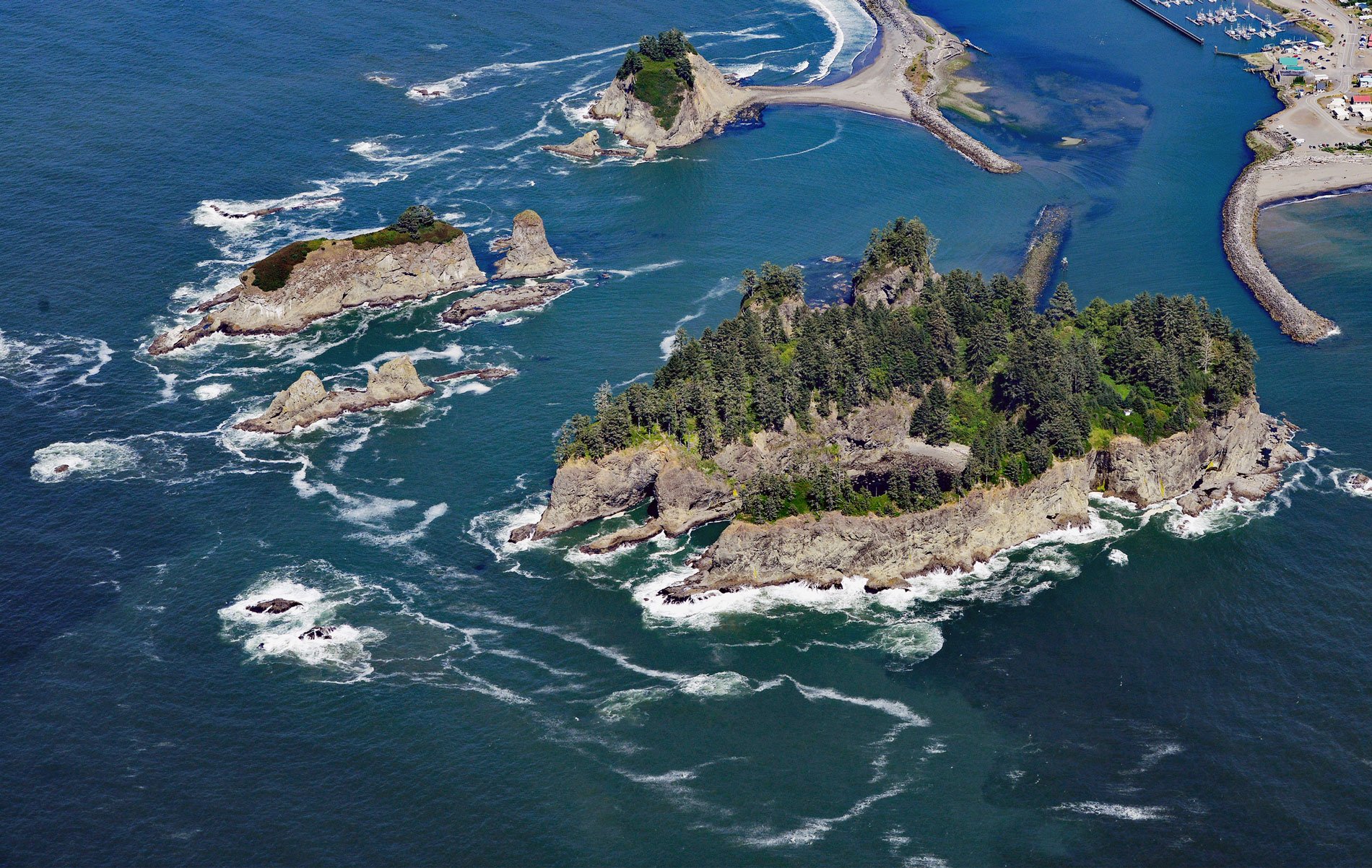James Island has an elevation of over 160 feet (50 m) and is located at the mouth of the Quillayute River, about 32 miles (52 km) south of Neah Bay and 0.6 miles (1 km) west of La Push, Washington. The island reputedly was named for Francis Wilcox James, a lighthouse keeper and friend of the Quileute, although it may have been named for Jimmie Howeshatta, a Quileute chief. The Quileute name for the island is A-ka-lat meaning “Top of the Rock”. The island was historically connected to the mainland by a sand spit. In 1974, a revetment or training wall over 3,000 feet (915 m) long was built by the U.S. Army Corps of Engineers to reroute the Quillayute River and provide a better harbor for La Push.
James Island was the location of a fortified village in 1788 when first described in written accounts by Captain John Meares, and had continual habitation until the second half of the 19th century. The island is a source of spiritual power for the Quileute people and a place where high-status individuals were historically placed in canoes in the trees after death. It was also a natural lookout to defend the village against occasionally hostile neighbors and to sight whales. During World War II, the island was part of the U.S. Navy Coastal Lookout System. Today, the U.S. Coast Guard operates a foghorn and a navigational light that provides guidance for boats entering the harbor.
In 1966, James Island was removed from the Quillayute Needles National Wildlife Refuge by the U.S. Department of the Interior and returned to the Quileute people because it was in the historic Quileute Indian Reservation. Read more here and here. Explore more of James Island here:

